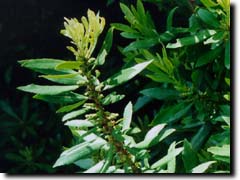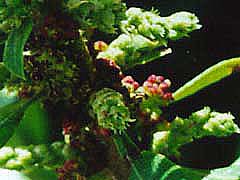Myricaceae (Wax-myrtle Family)

Members of Myricaceae are shrubs and small trees with aromatic alternate leaves. The western varieties are all evergreen, while some in other locals are deciduous.
Plants develop catkins of both pistillate staminate (female and male, if you will) flowers. The pistallate catkins have two or more bracts and are erect - each pistil develops into a small single-seed fruit. The stamonate bracts are longer, drooping, and have a single bract.
On Montara Mountain and in the Bay Area, there is only one species from this family:

